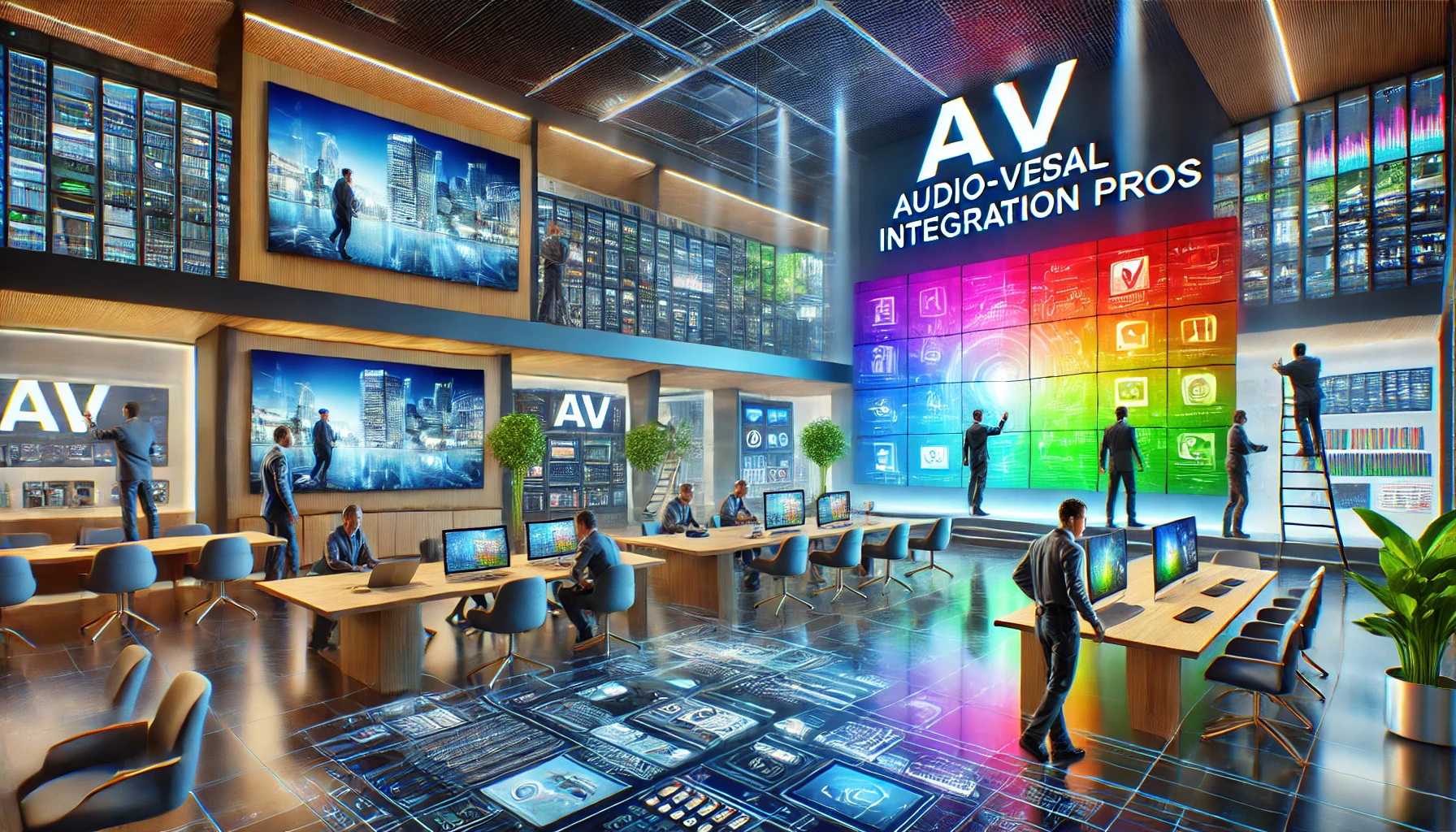Introduction
Audiovisual integration is revolutionizing how businesses and industries connect with their audiences. By blending audio and visual technologies into cohesive systems, industries such as entertainment, education, and corporate communication create immersive, engaging, and interactive experiences. As 2025 approaches, the demand for seamless audiovisual solutions has never been greater.
This article explores key technologies, challenges, and future trends in audiovisual integration. It highlights how platforms like Vitrina.ai empower professionals with insights, tools, and partnerships to streamline their AV strategies and thrive in a dynamic global landscape.
Table of content
- Introduction
- Audiovisual Integration
- Key Technologies in Audiovisual Integration
- Challenges in Audiovisual Integration
- Solutions and Strategies for Effective AV Integration
- Sustainability and Future Trends in Audiovisual Integration
- Case Studies and Applications
- How Vitrina.ai Supports Audiovisual Integration
- Conclusion
- FAQs
Expand Your AV Capabilities

1.Audiovisual Integration
What is audiovisual integration, and why is it important in 2025?
Audiovisual integration refers to the seamless combination of audio and visual technologies to deliver cohesive and immersive user experiences. Whether for corporate presentations, entertainment venues, or educational settings, AV integration creates environments that captivate audiences and streamline communication.
How does audiovisual integration impact audience engagement in entertainment venues?
From concerts to theaters, AV systems enhance storytelling through synchronized visuals and audio. For example, interactive displays and dynamic soundscapes can transform an event into an unforgettable experience, driving customer satisfaction and loyalty.
How does AV integration influence corporate communication?
In the corporate sector, AV systems power virtual meetings, live webinars, and hybrid events, ensuring clarity and engagement across remote and in-person teams.
How is AV integration improving educational experiences in 2025?
Smart classrooms equipped with AV technology foster interactive learning. Features like augmented reality (AR) simulations make complex subjects more accessible and engaging for students.
2. Key Technologies in Audiovisual Integration
How is AI transforming audiovisual integration systems?
AI is revolutionizing AV systems with features like real-time content optimization and adaptive automation. For instance, AI-driven sound equalizers can adjust settings based on room acoustics.
What are the key features of a modern AV integration system?
Modern AV systems prioritize scalability, user-friendliness, and interoperability. Centralized control panels and cloud-based solutions ensure efficient management across devices and locations.
How does AV over IP enhance audiovisual system performance?
AV over IP (Audio-Visual over Internet Protocol) enables cost-effective, scalable distribution of audio and visual data across networks. It simplifies content sharing and reduces the need for traditional cabling.
What role does immersive technology play in audiovisual integration?
Immersive technologies, such as virtual reality (VR) and augmented reality (AR), transform how users interact with AV systems. For example, VR headsets offer unparalleled engagement in gaming and training applications.
3. Challenges in Audiovisual Integration
What challenges do enterprises face in implementing AV systems?
Enterprises often grapple with high upfront costs, technical complexity, and compatibility issues between legacy systems and new technologies.
How do cultural nuances affect AV integration for global markets?
Localization is crucial. Systems must cater to regional languages and cultural preferences to resonate with diverse audiences.
What are the most common mistakes in audiovisual integration implementation?
Poor planning, inadequate training for operators, and failure to assess specific needs can hinder the success of AV projects.
What are the ethical considerations in deploying AV systems in public spaces?
AV systems in public spaces raise privacy concerns, especially when integrated with surveillance technologies. Transparency and adherence to regulations are vital.
Stay Ahead in AV Trends

4. Solutions and Strategies for Effective AV Integration
What are the key components of a successful AV integration strategy?
- Collaborative vendor selection.
- Setting clear objectives.
- Regular system updates and maintenance.
How do data-driven insights optimize AV system performance?
Analytics tools monitor system usage and performance, enabling professionals to fine-tune setups for maximum efficiency.
How is AV integration streamlining workflows in the entertainment supply chain?
Automated processes reduce manual intervention, speeding up content delivery and improving accuracy.
5. Sustainability and Future Trends in Audiovisual Integration
What role does sustainability play in audiovisual integration technology?
Energy-efficient equipment and eco-friendly designs reduce environmental impact. For instance, LED displays consume less power than traditional systems.
What advancements in AV over IP are expected by 2025?
Future innovations will enhance streaming quality, reduce latency, and offer more robust data security.
6. Case Studies and Applications
How does AV integration enhance hybrid and virtual events?
AV systems ensure seamless integration of live and virtual elements, delivering engaging hybrid experiences for attendees worldwide.
What role does audiovisual integration play in virtual production studios?
Virtual studios leverage AV systems to create photorealistic environments, reducing production costs and timelines.
How is AV technology used in creating immersive esports environments?
Real-time graphics and advanced sound systems amplify the competitive and spectator experience in esports arenas.
7. How Vitrina.ai Supports Audiovisual Integration
How can Vitrina.ai assist in finding AV integration vendors?
With a directory of over 80,000 professionals and companies, Vitrina.ai connects users with top AV integration providers tailored to their specific needs.
How does Vitrina.ai support professionals with audiovisual integration projects?
Vitrina.ai offers data-driven insights, helping professionals make informed decisions, streamline vendor selection, and stay updated on market trends.
Conclusion
Audiovisual integration is reshaping industries with innovative solutions, from immersive environments to real-time content optimization. Platforms like Vitrina.ai empower professionals by providing essential tools, insights, and connections for AV success.
Frequently Asked Questions
Audiovisual integration combines audio and visual technologies to deliver seamless, immersive experiences across industries like entertainment, education, and corporate sectors.
As technology advances, AV integration is crucial for creating interactive environments, improving workflows, and engaging diverse audiences.
Key technologies include AI-driven automation, AV over IP, IoT integration, and immersive XR solutions.
Vitrina.ai connects professionals with AV integration vendors, provides data-driven insights, and streamlines project workflows.
Challenges include high costs, technical complexities, cultural localization, and ensuring compatibility across systems.

































